I have posted this technique before but to save you searching through old posts here it is again.
The principles of this technique are that most trees have the ability to grow new roots when circulation of sap is restricted. When the new roots emerge above the plate they are forced to grow out horizontally to the edges before diving deeper into the soil. This gives us a great start to a shallow, spreading nebari much prized in bonsai. As an added benefit, when trees rely solely on lateral roots the base of the trunk expands to give a buttressed trunk base which in turn gives your tree much better trunk taper. 2 great bonsai assets for the one simple technique.
In this case I thread the seedlings through holes drilled in sheet metal. I’ve tried a number of alternative materials but steel or aluminium is easy to get, easy to cut and drill and more durable than other alternatives. If you find another suitable replacement feel free to modify for your own uses.
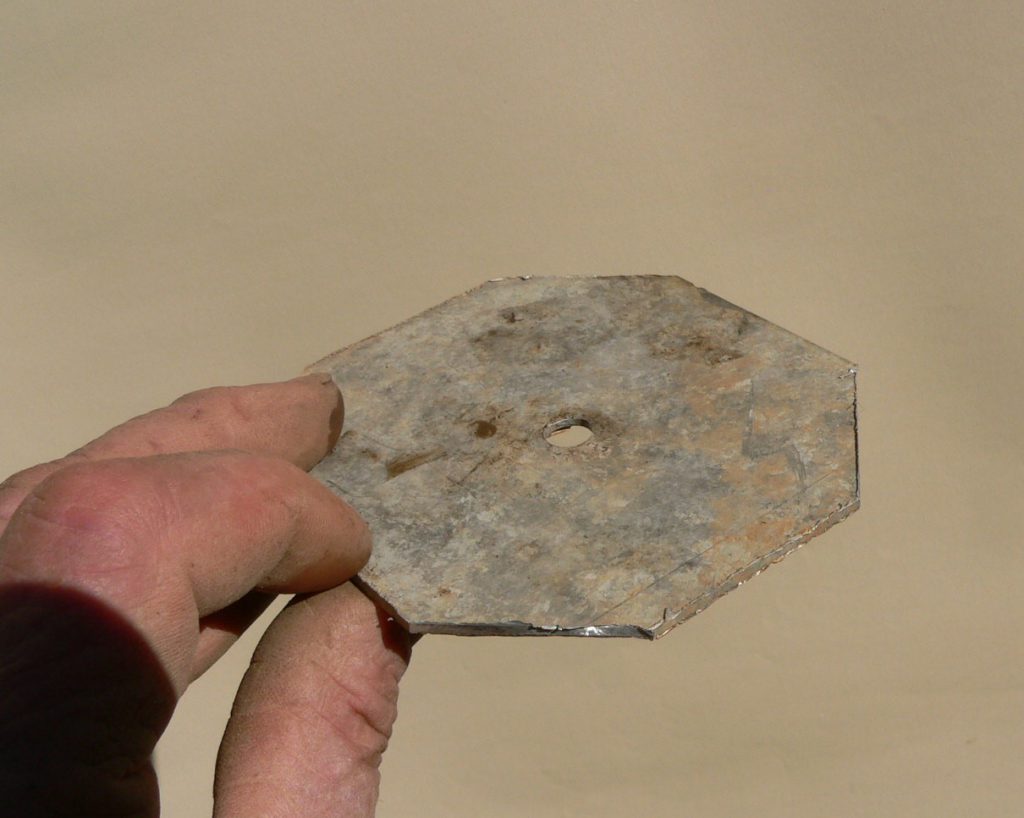
The plates do not need to be too big. I have found it far more effective to continue to develop the nebari through pruning so the plate is only to establish an initial radial root system. Making the plates too large extends the time the young roots are growing close to the surface through summer. I have reduced the size of my plates from 10cm to around 7 cm square, hexagonal or round if you are clever enough to be able to cut them.
Holes need to be large enough to thread the seedlings through without ripping off all the buds. A little larger is fine as the trunks will quickly grow to fill the holes anyway.
Thread the trunks through your plates.
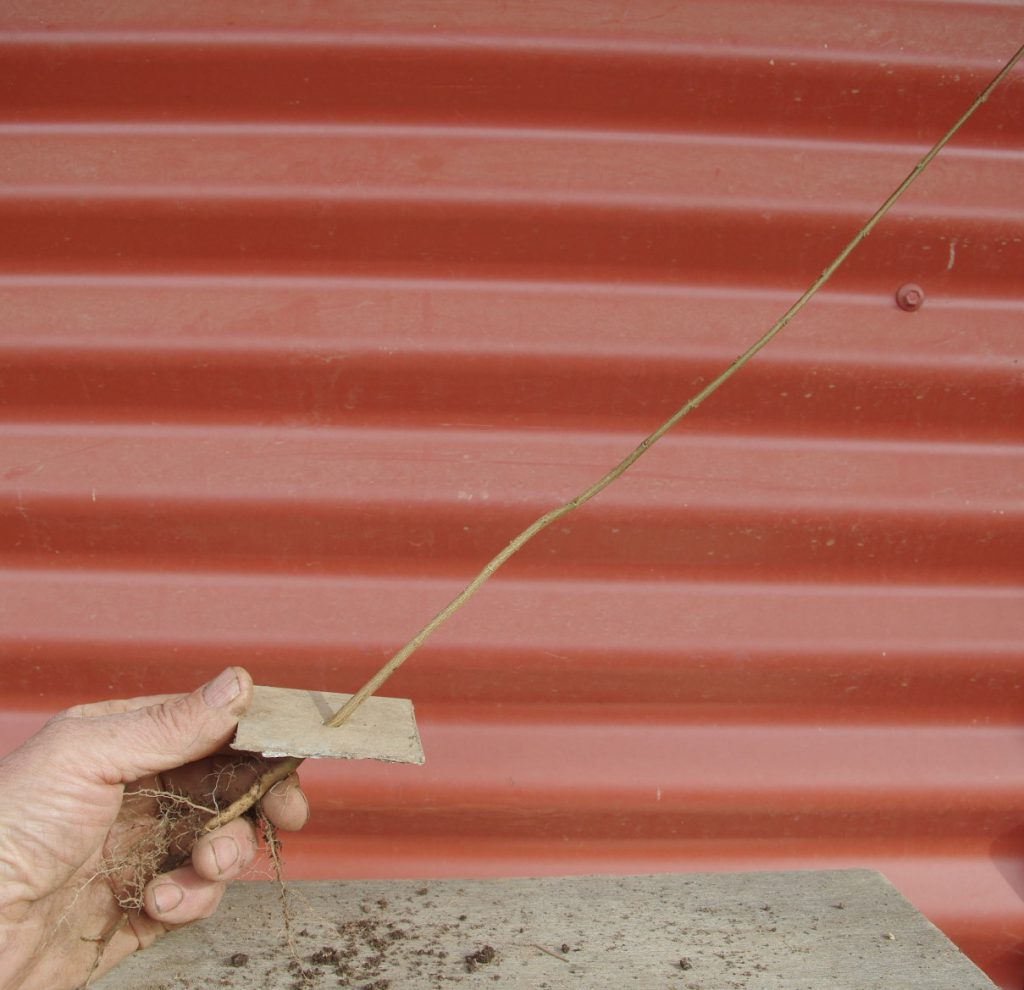
There’s only a couple of bonsai styles where vertical trunks are better so try to plant your new plate trees on an angle so the future trunk will emerge from the soil to one side or another. the roots below the plates can be left untrimmed so the seedling grows faster. They will sustain the tree while it thickens and will then die off.
Now plant the whole thing so the plate is just covered with soil. Do not plant too deep as trident maples are really good at growing new roots from the buried trunk. You want the tree to grow a new set of roots just above the plate and not at random places all up the trunk! Shallow planting does bring some extra challenges. By the time the seedling has thickened and sap flow is restricted it will be summer. The new roots must make it to the edge of the plate and into deeper, damp soil before the soil above the plate dries out. Early attempts were planted direct into the grow beds and many died during this crucial dry period. I get far better results by keeping these trees in the nursery in grow boxes fro the first year to establish good roots before transferring into the ground the following spring.
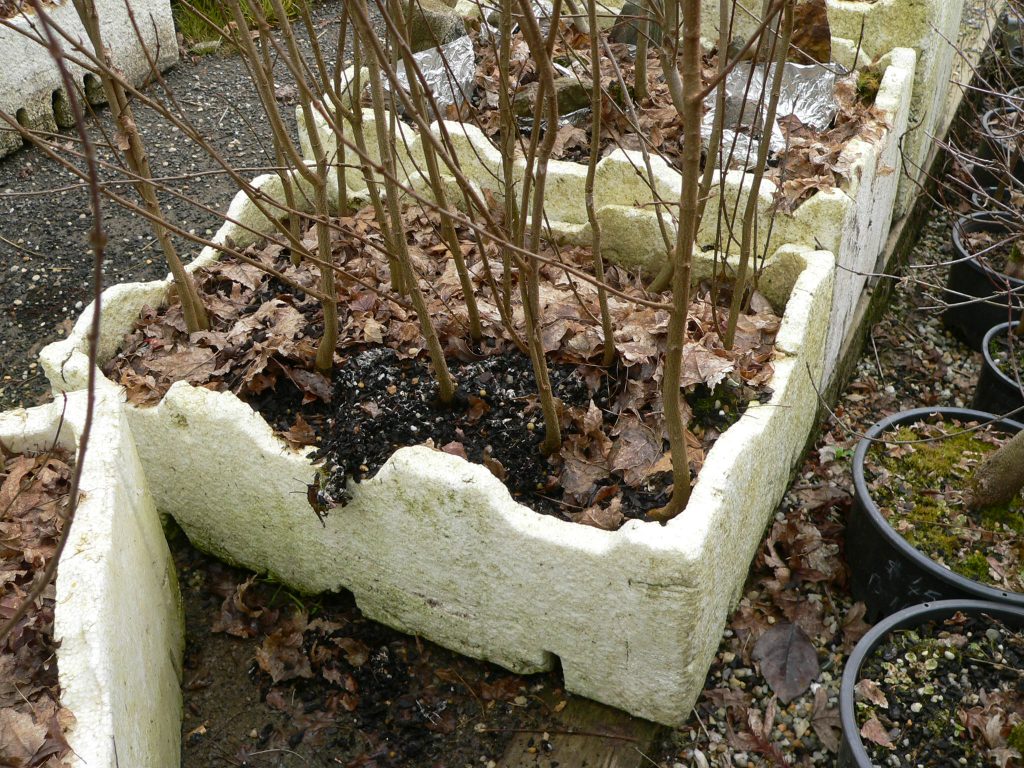
At the end of one year dig the trees. Prune all roots right back to the edge of the plates. this step does several important things. It restricts strong roots and allows smaller ones to catch up to give a far more even radial root system. Pruning also makes the initial roots ramify into many more smaller roots to give a far better nebari. No need to prune any roots still growing through the hole in the plate. The connection to the trunk above has limited time and they will soon die anyway.
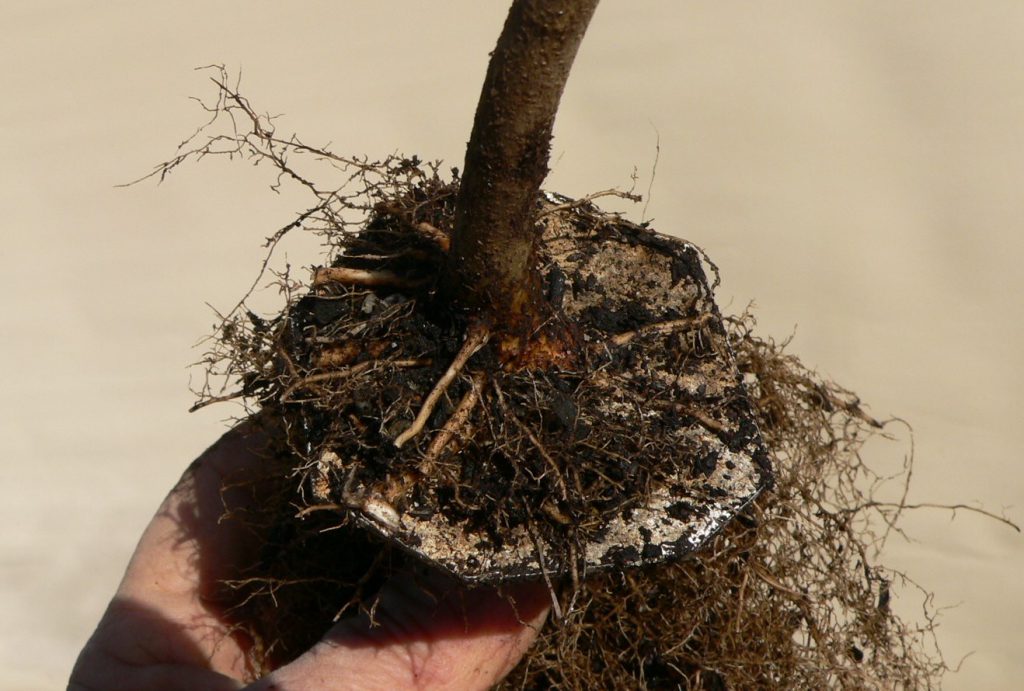
The trees can now be planted to grow. I put them in my grow beds but a larger grow pot or box will be fine if you have limited space. Remember not to plant too deep or you will get new roots growing higher on the trunk and that’s a great way to ruin your fine new nebari below.
The rest is up to you. Trident maples grow really quick. So do the roots so I find it better to dig and prune every winter. That gives me the opportunity to root prune to add even more ramification to the new nebari and to control the strength of roots so one does not become dominant. Pruning the tops each year gives far better trunk taper and also gives more options to prune for trunk bends and shape.
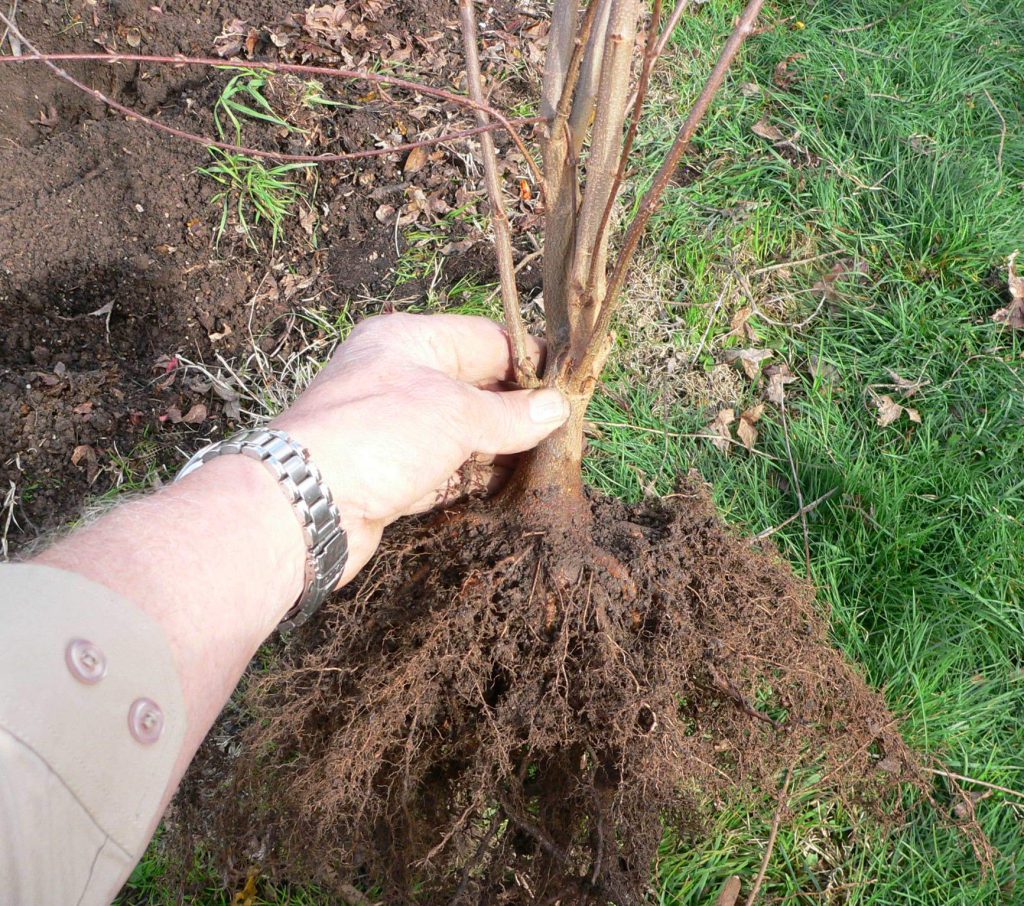
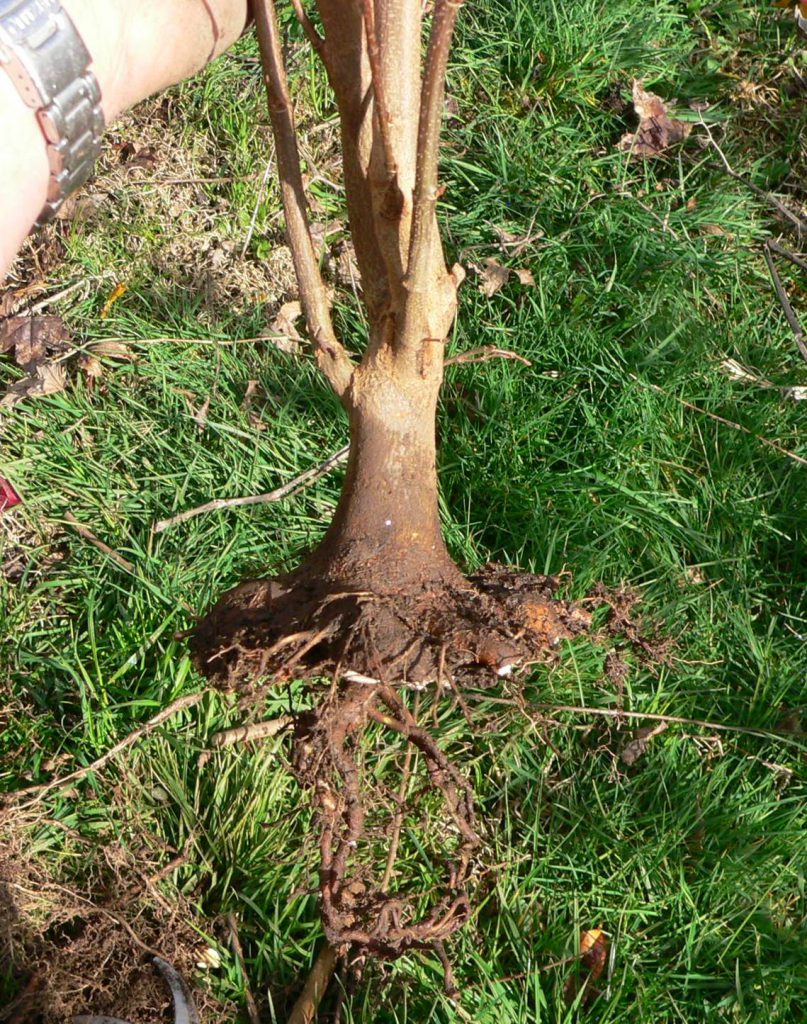
After a couple of years the original roots through the central hole will have died and you can remove the plate. Its job of producing new lateral root system is done and while there are vigorous lateral roots the tree will not put much effort into vertical roots now so you can move to standard root pruning.
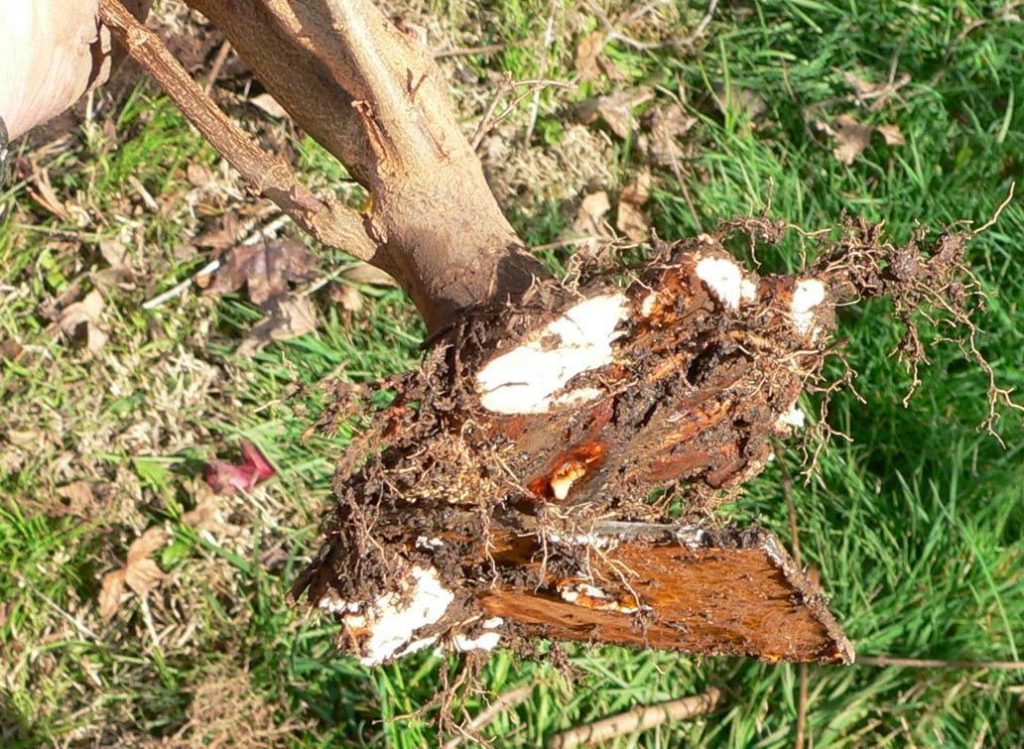
This technique can also be used to create multi-trunk trees. Drill a number of holes in your plate and thread several seedlings through.
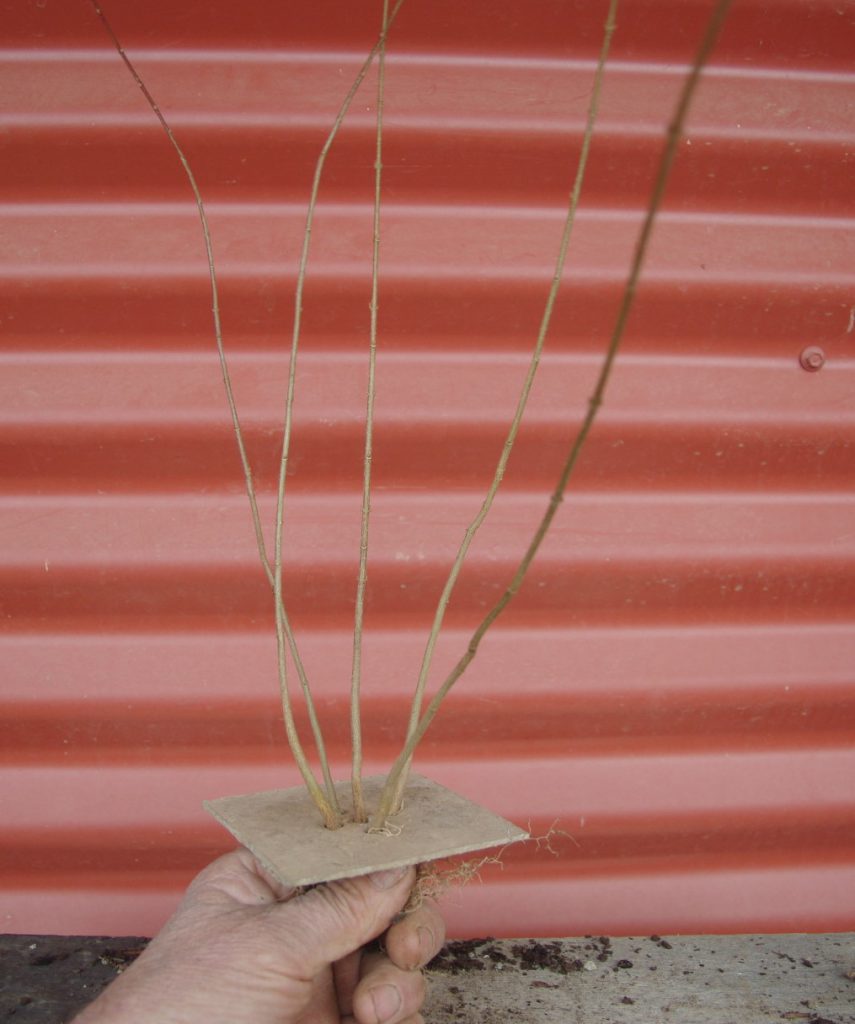
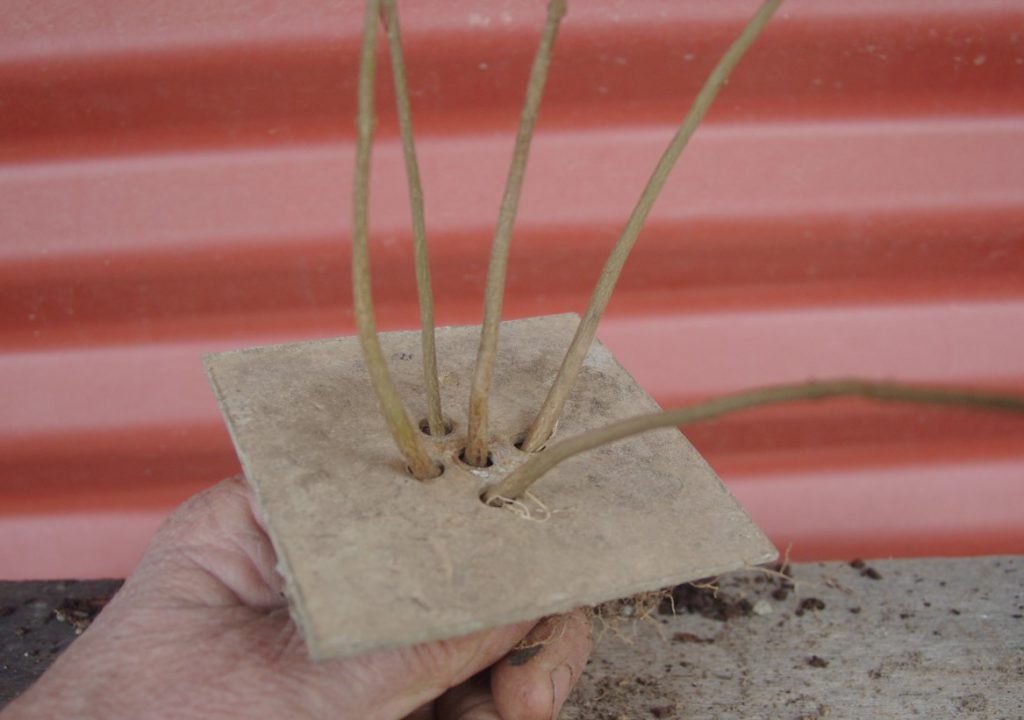
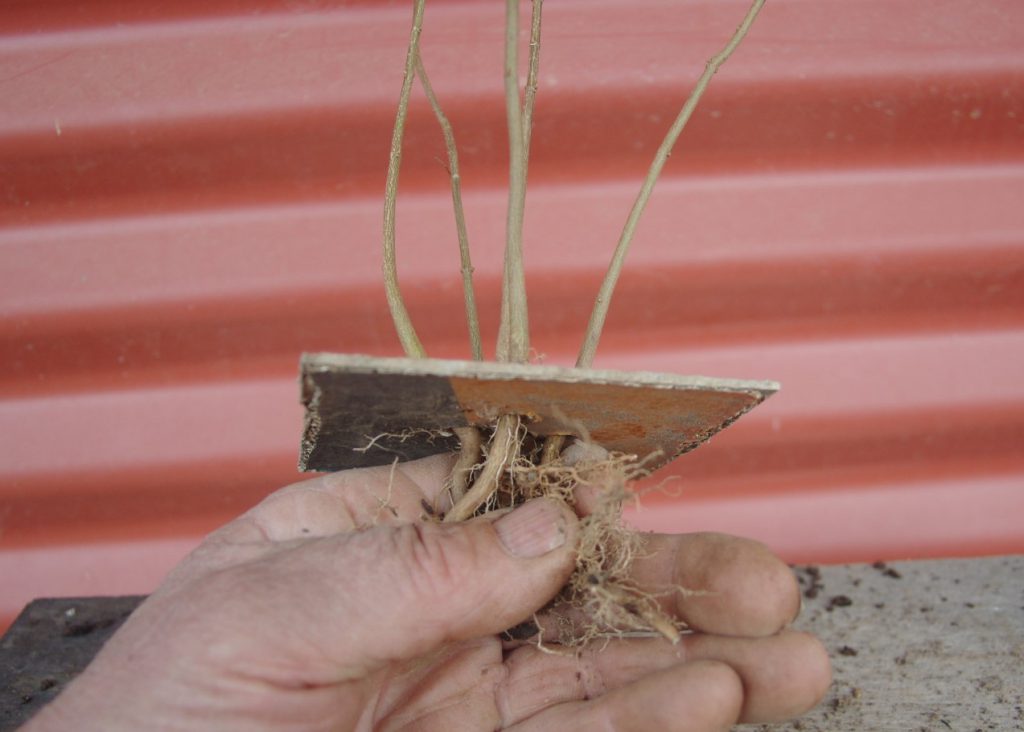
As the new roots grow above the plate they will merge with the new roots of the other seedlings close by. Eventually the trunks will fuse together into a many trunk tree.
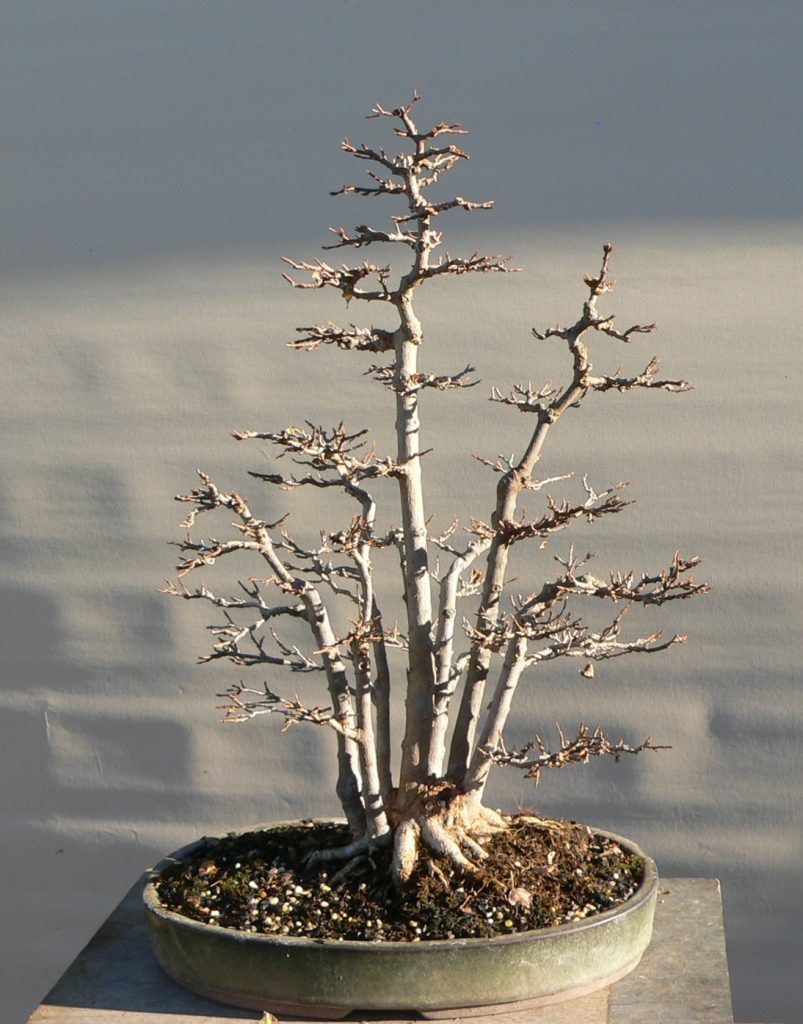
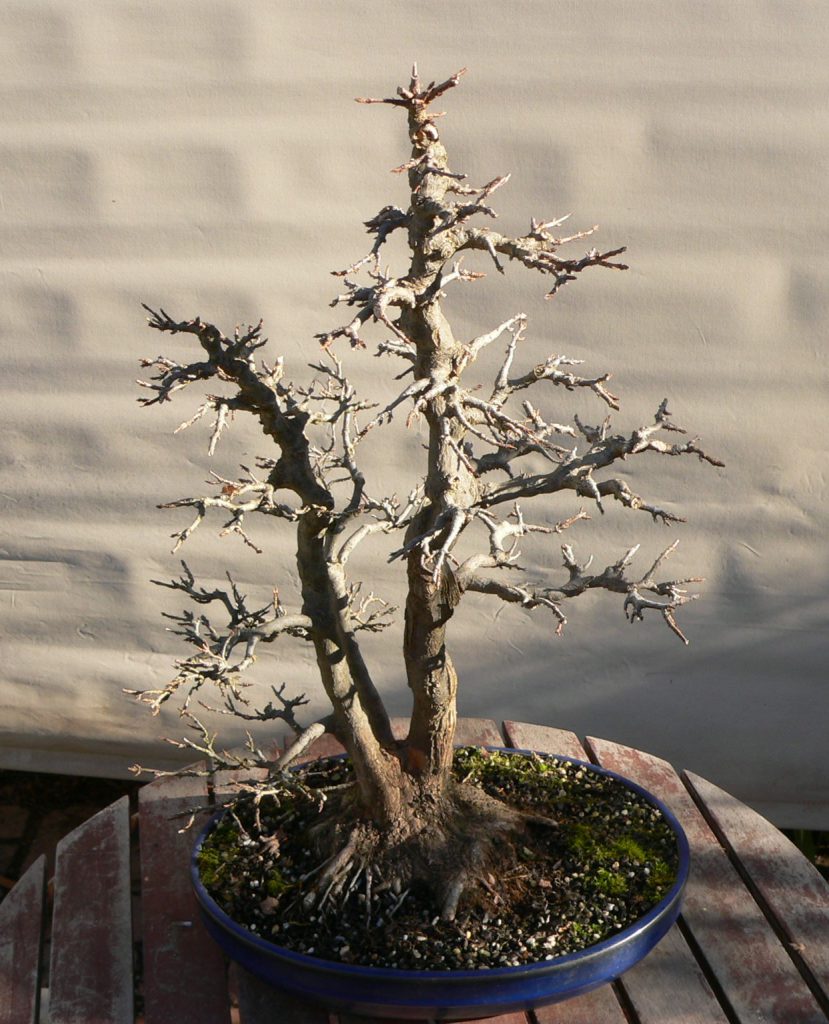
Start with more trunks than you intend to keep. Some may not develop as planned and can be removed after they are well fused. The roots will add to your clump’s nebari. The 7 trunk tree above has had at least one trunk removed because it did not fit well with the design. The scar is still visible between the base of the main tree and the one to the right.
After they are well fused and properly sharing roots and sap flow you may even decide to make a single trunk tree. Reduce trunks back to just one but that remaining trunk will now have the merged base of all the trunks – a huge pancake nebari.
This technique is ideally suited to trident maples but can also be applied to other species. Here are a couple of Japanese black pines that are currently developing new roots above plates. I have scraped the potting mix back so you can see the new roots growing from the swelling above the plate. I’ll cover them up straight after the photo to continue to develop.
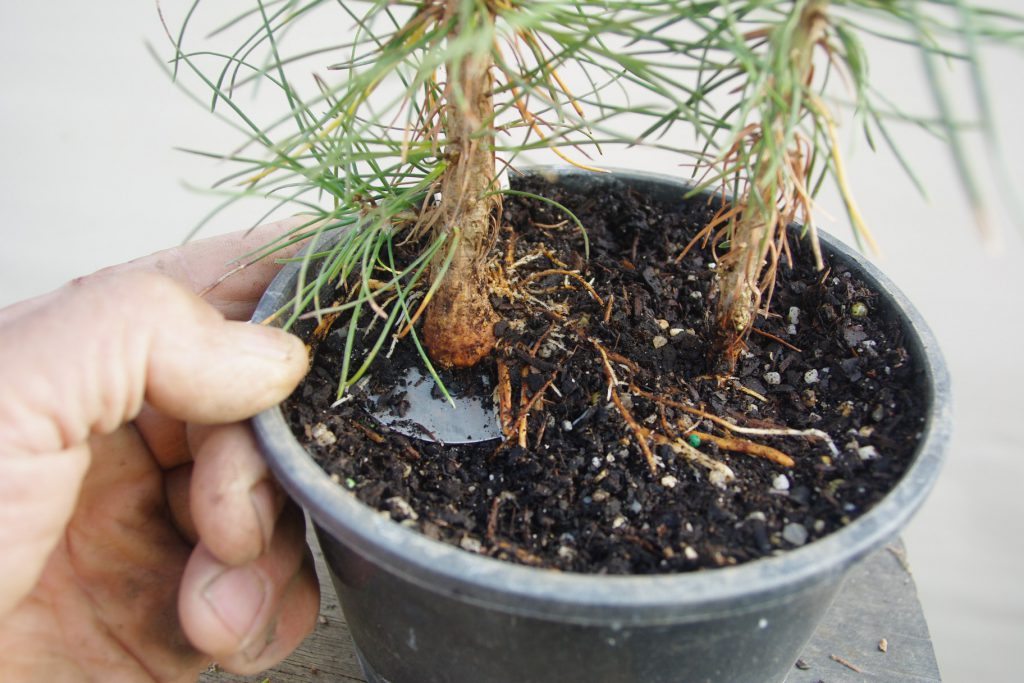
Small and medium sized seedlings are best for this technique. Make sure you mention you want them for threading through plate and I’ll try to select mostly straight seedlings with no branches so it is easier to get them through those holes.
